



The palace within the fort is the biggest highlight. Designed with suites for the king and his queens, it features frescoed walls, ornate ceilings, and beautifully arched windows. Each queen’s suite had a separate chamber connected through common corridors, reflecting both privacy and symmetry in design.

Nahargarh Fort features historic step wells that showcase the traditional water conservation systems of Rajasthan. These structures not only provided water but also added to the fort’s sustainable design.
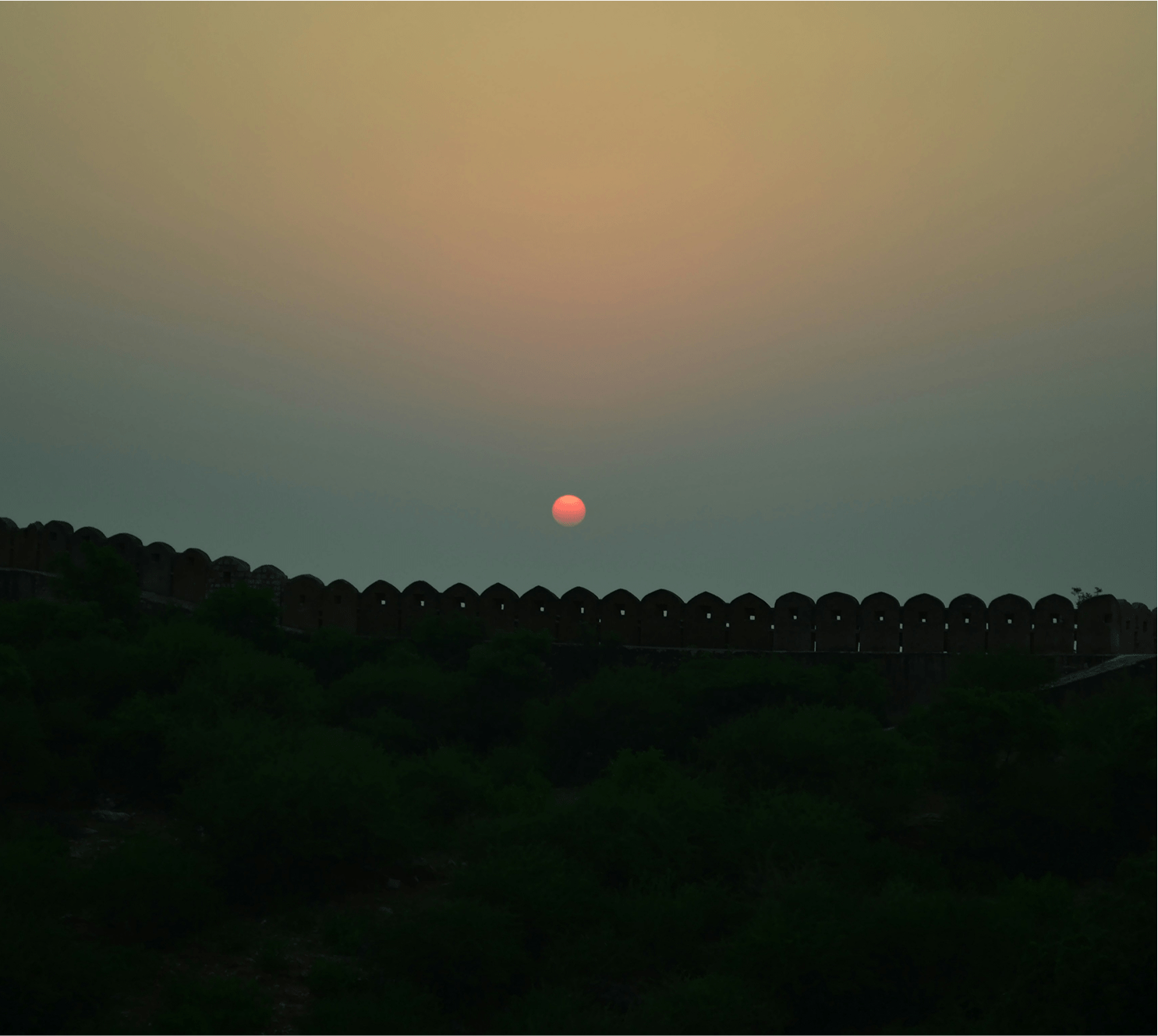
Nahargarh is Jaipur’s most famous sunset spot. The terrace and walls of the fort provide dramatic views as the sun sets over the Pink City, painting the sky in shades of orange and gold. It’s a photographer’s paradise.

The fort complex houses Jaipur Wax Museum, featuring lifelike wax figures of famous personalities, and Sheesh Mahal (Hall of Mirrors), which beautifully combines glasswork with Rajasthani artistry.

Situated at the base of the fort, this wildlife park is home to lions, tigers, leopards, and several bird species, making it a great addition to your itinerary if travelling with family.
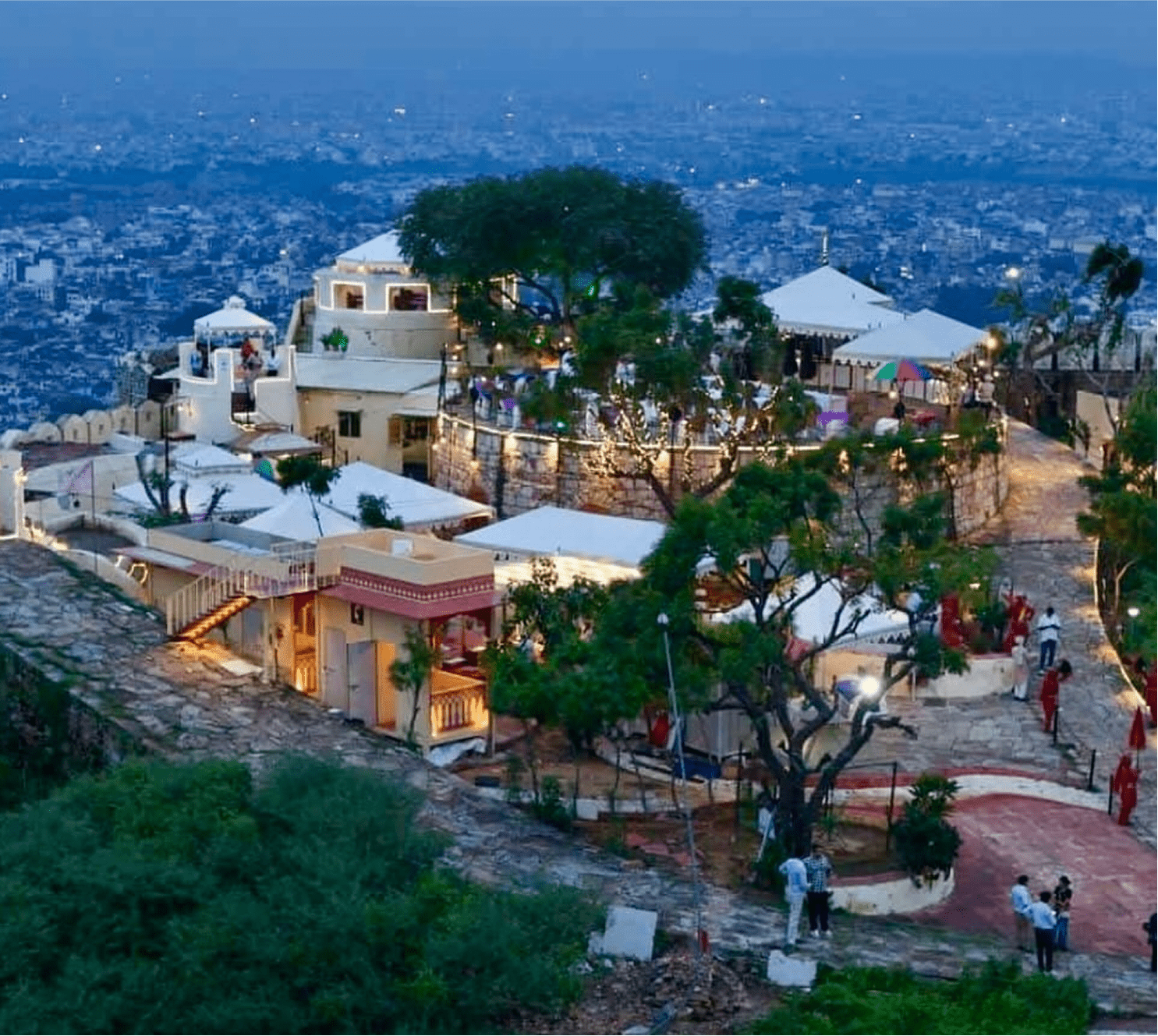
The fort features trendy rooftop restaurants and cafés, such as Padao Restaurant, offering panoramic views of Jaipur city, making it a popular spot for evening hangouts and candlelight dinners.

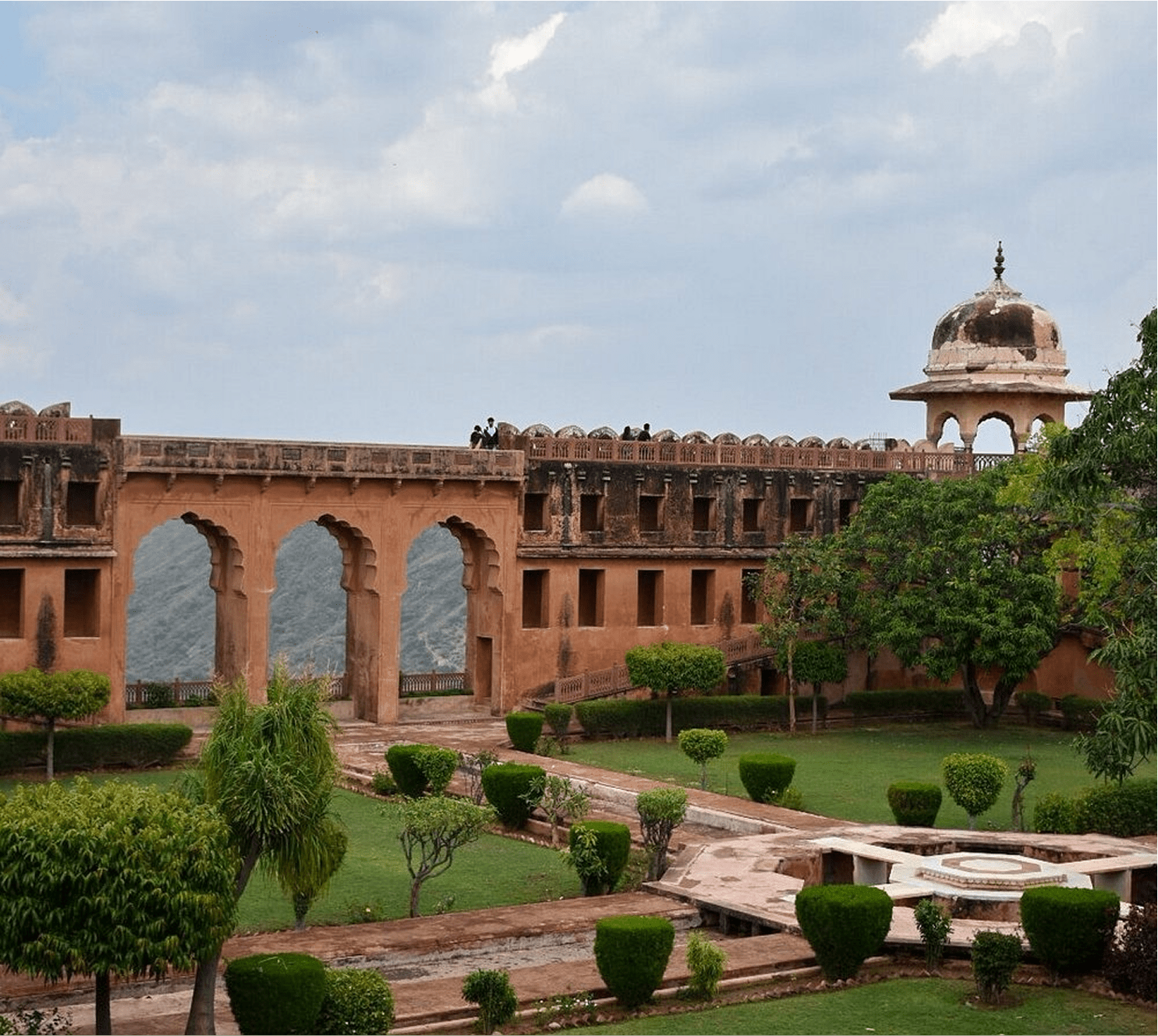
5 km, famous for the world’s largest cannon on wheels (Jaivana).
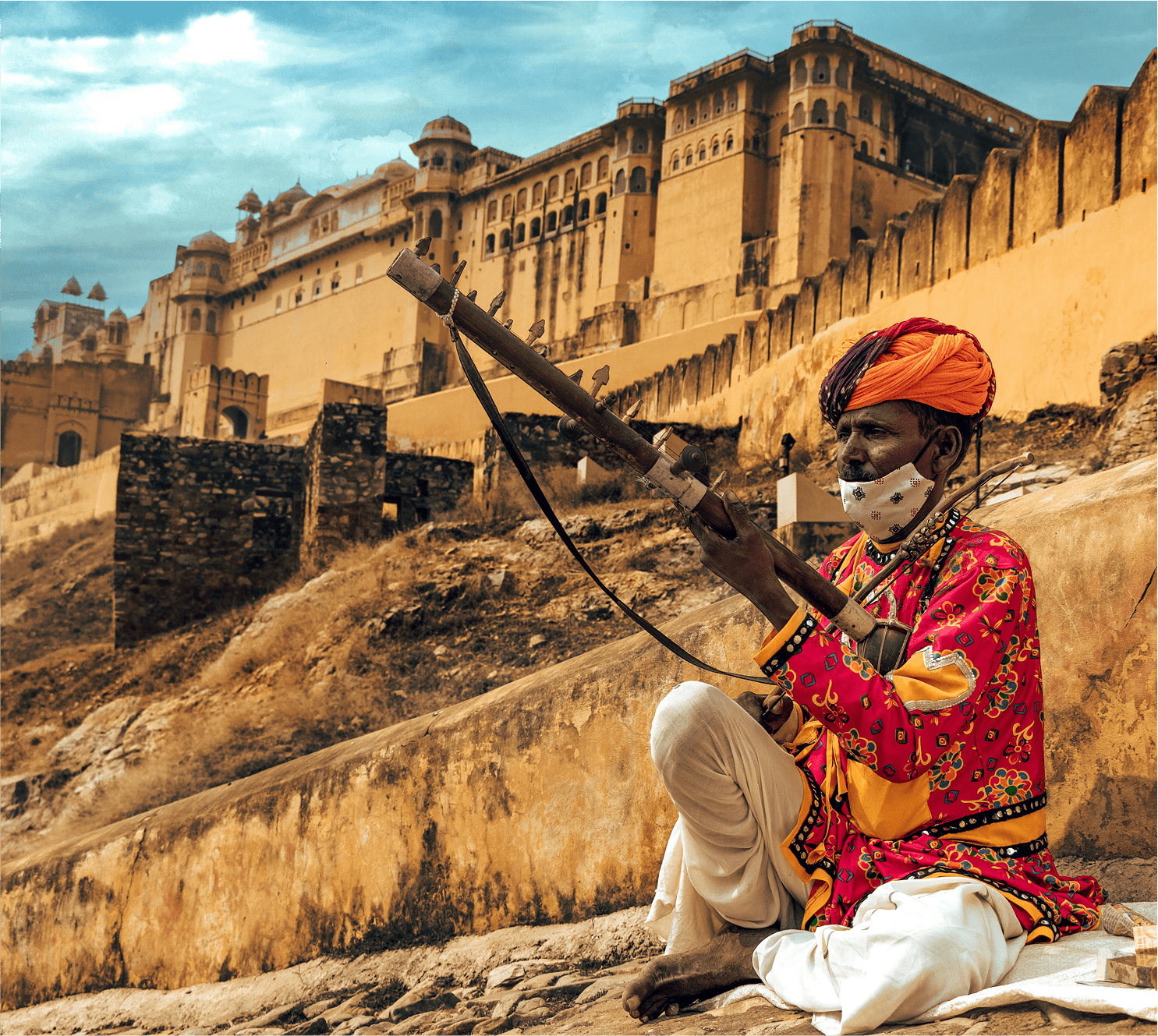
10 km, UNESCO World Heritage site and architectural marvel.
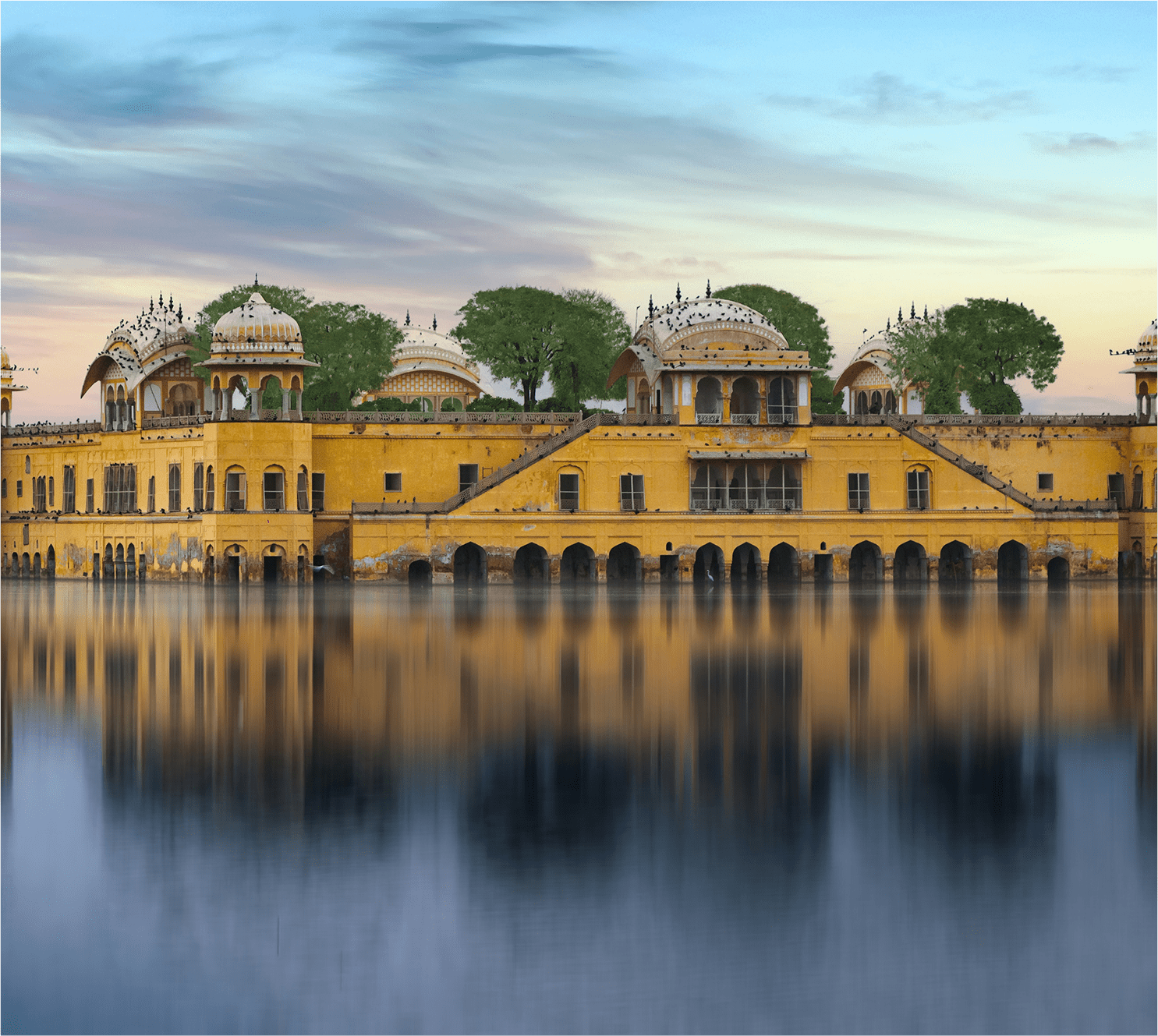
10 km, a palace floating on Man Sagar Lake.
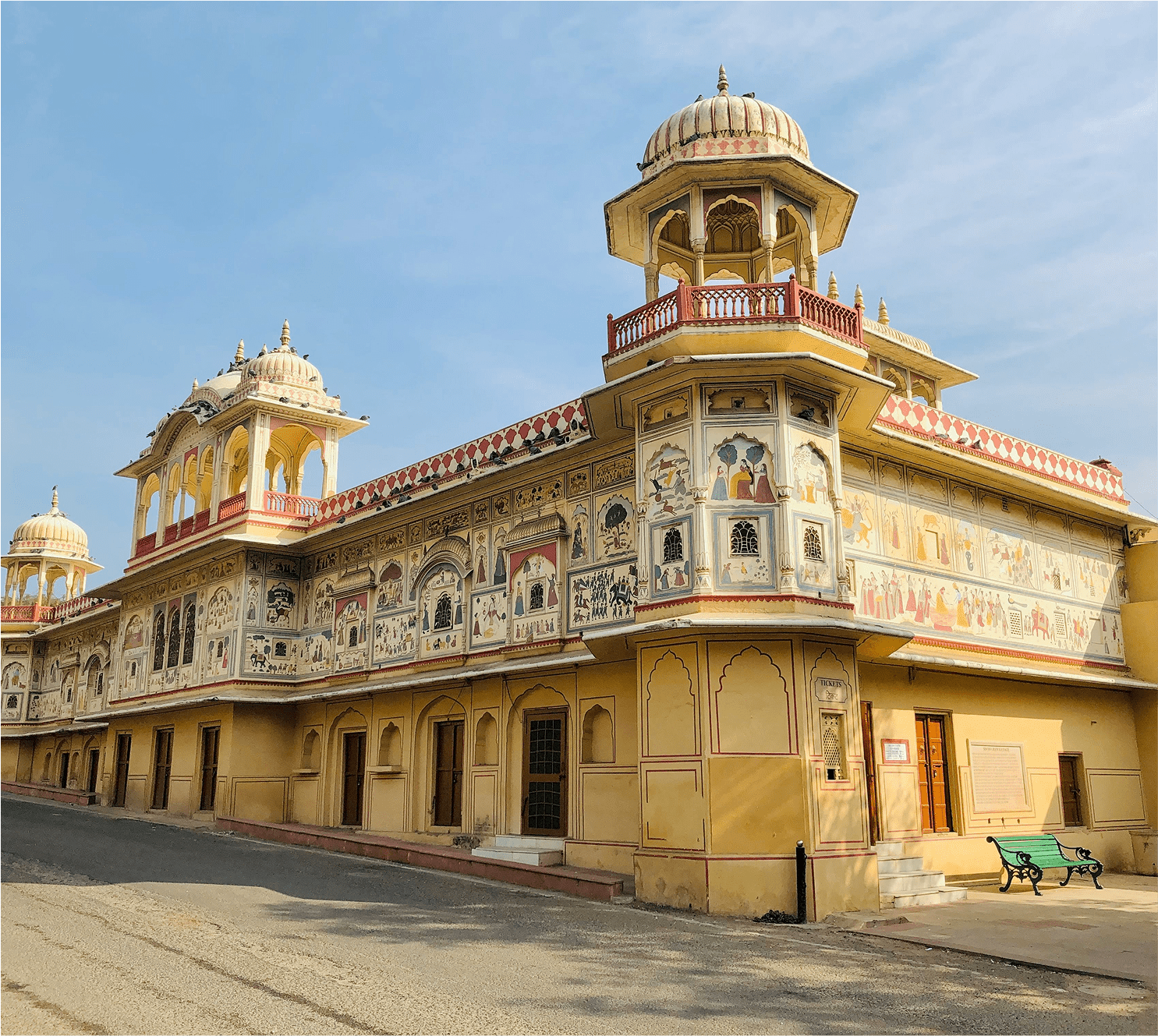
14 km, Jaipur’s historic core.

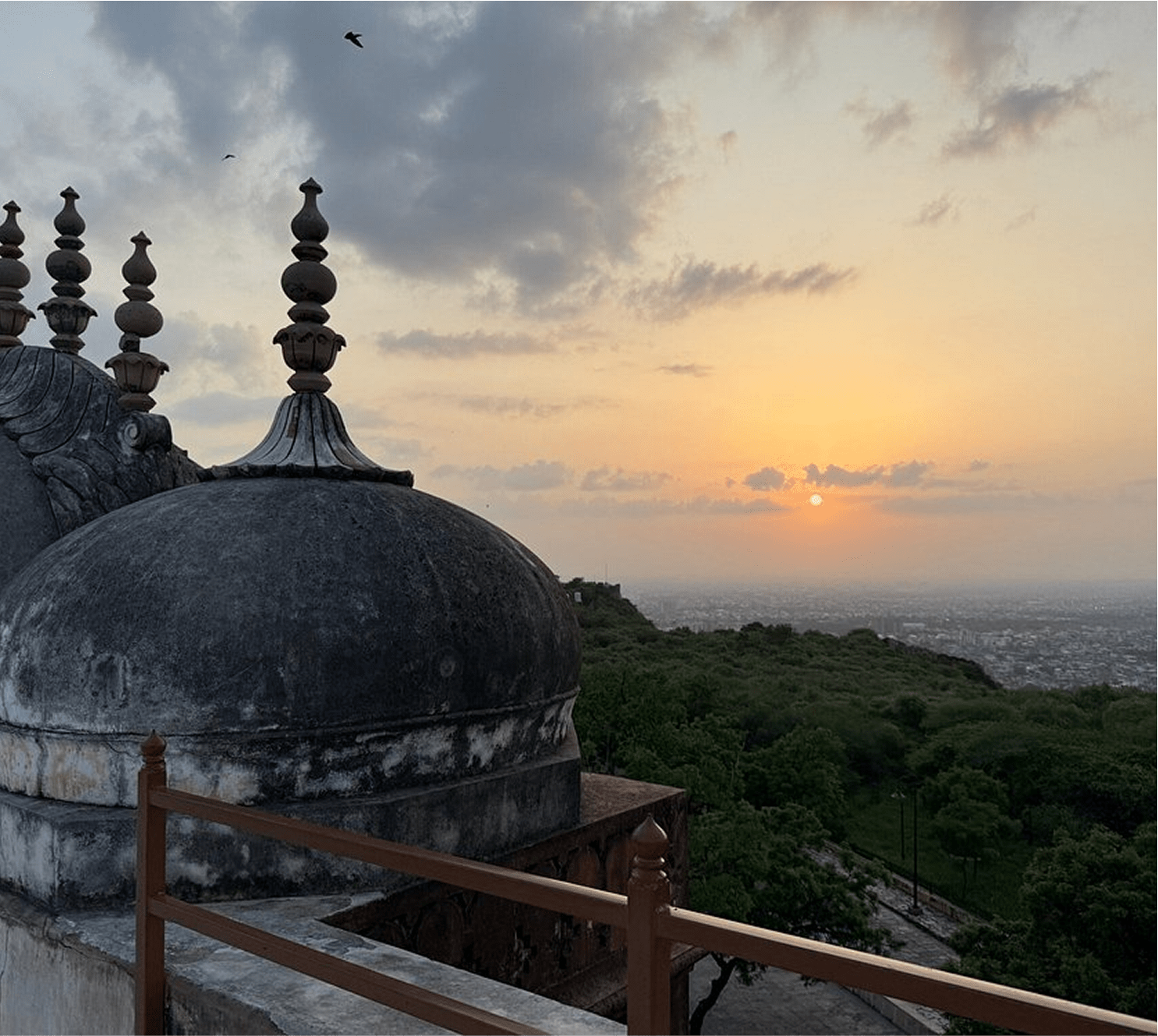
Panoramic views of Jaipur at golden hour.

Intricate frescoes and arched corridors.
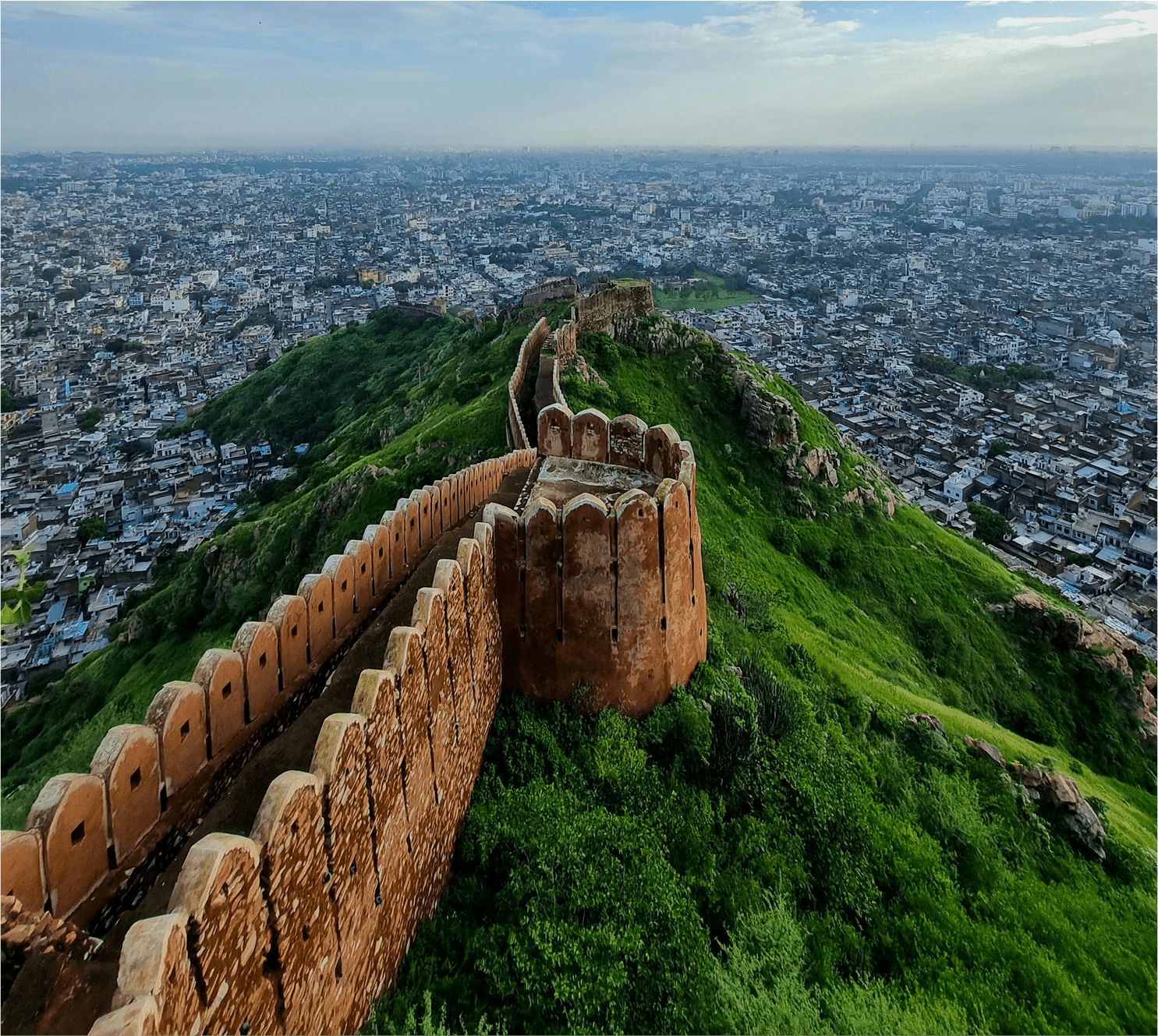
Wide-angle shots of fort architecture against city views.
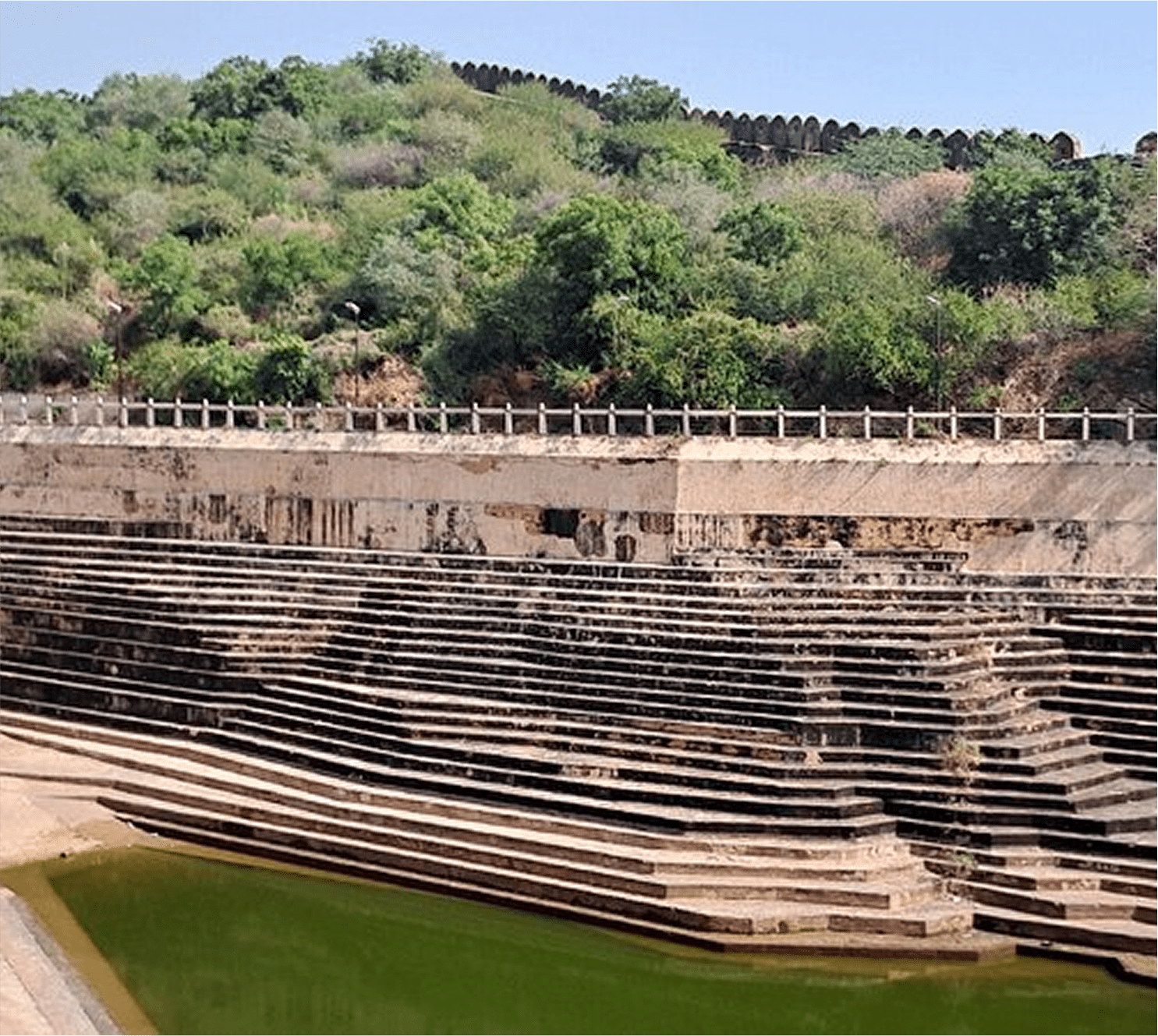
A rustic photography spot featuring geometric patterns.
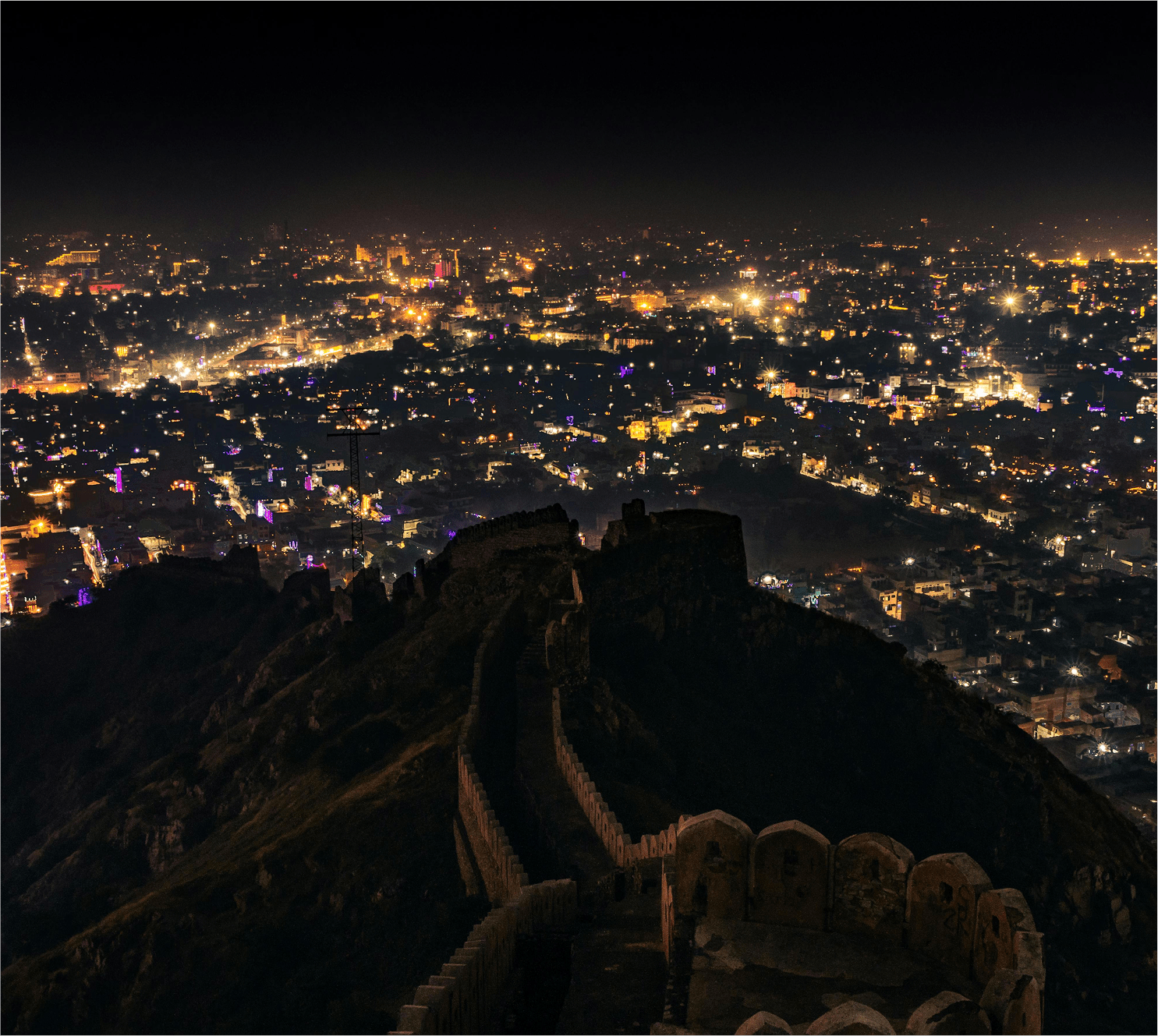
Jaipur city sparkling at night, seen from the fort terrace.